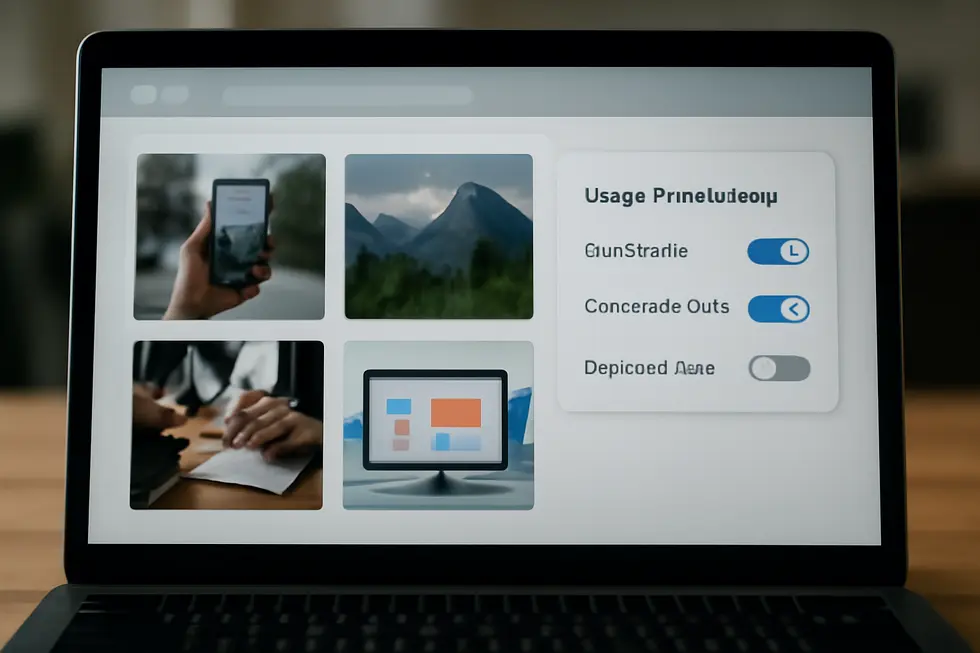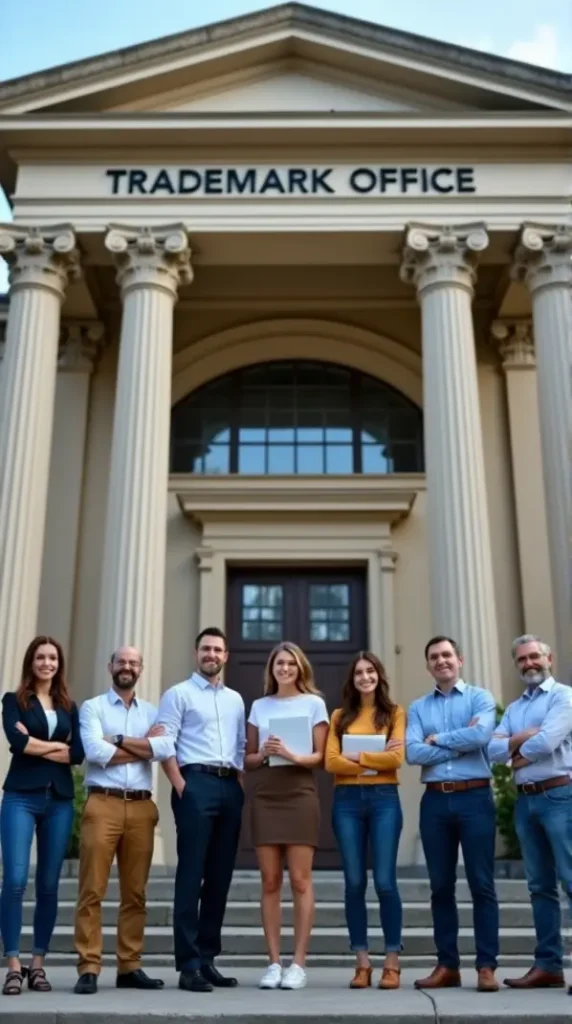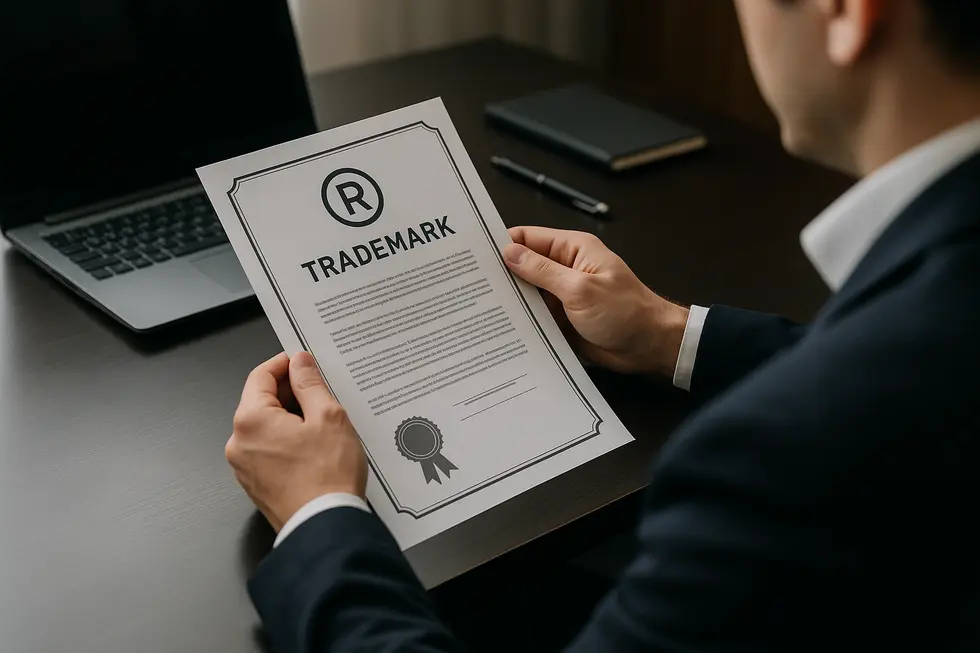导言
For business owners, understanding copyright language is essential to safeguarding creative assets, avoiding legal disputes, and maximizing control over intellectual property. Copyright language—the specific wording found in contracts, licenses, and legal notices—defines who owns your creative works, how they may be used, and the rights that apply to each party involved. This clarity empowers businesses to protect their innovations and brand identity effectively. The journey begins with ownership clarity, establishing unambiguous rights over your creations. Next, defining usage permissions ensures proper control over how your work is shared and reused. Then, intellectual property transfers are carefully articulated to secure business interests when collaborating or contracting. The protection of original expression underscores what qualifies for copyright, setting boundaries between ideas and fixed expressions. Finally, the inclusion of symbols and notices, such as the © symbol, serves as a visible deterrent against infringement. Together, these chapters offer business owners a comprehensive understanding of copyright language that builds a strong legal foundation for their creative assets.
目录
Chapter 1: Ownership Clarity in Copyright Language
- Precisely Defining Copyright Ownership and Rights Transfer
- Defining the Reach and Boundaries of Copyright Rights in Ownership Agreements
- Establishing Clear Ownership: Legal and Contractual Constructs in Copyright Agreements
Chapter 2: Usage Permissions Defined by Copyright Language
- Navigating Legal Boundaries: How Copyright Language Defines Usage Permissions and Licensing Frameworks
- Navigating the Process of Securing Copyright Usage Permissions: Effective Requests and Rights Management
- Navigating Exceptions and Fair Use: Balancing Rights and Access in Copyright Permissions
Chapter 3: Transfer of Rights Through Copyright Language
- Strategic Negotiation and Customization in Copyright Transfer Agreements
- Clarifying Exclusivity and Retained Rights: Precision in Copyright Transfers
- Navigating the Legal Authority and Economic Trade-offs in Copyright Transfers
Chapter 4: Protection of Original Expression in Copyright Language
- How Originality and Fixation Shape Copyright Language for Protecting Creative Works
- Navigating the Idea-Expression Dichotomy: Safeguarding Creative Expression Within Copyright Language
- How Original Expression Gains Immediate Protection Through Automatic Rights Vesting
Chapter 5: Symbols and Notices in Copyright Language: Communicating Rights and Protection
- Decoding Copyright Symbols and Notices: Their Legal Weight and Practical Impact
- Navigating Digital Frontiers: The Evolving Role of Copyright Symbols and Notices
- How Copyright Symbols and Notices Influence Society and Drive Economic Value
Chapter 1: Ownership Clarity in Copyright Language

1. Precisely Defining Copyright Ownership and Rights Transfer
In the realm of copyright language, establishing clear ownership and rights transfer is crucial for preventing disputes and ensuring legal certainty. Copyright ownership grants an individual or entity exclusive legal rights to use, reproduce, distribute, and adapt a creative work. While the author or creator initially holds these rights, they can be transferred fully or partially to another party through a written agreement, such as a contract or assignment. This transfer may involve either an assignment of full ownership or a licensing arrangement that grants limited permissions under specified conditions.
Effective copyright language must carefully delineate which rights are transferred, their scope—including reproduction, distribution, or public performance—the duration of the transfer, and whether the rights are exclusive or non-exclusive. This precision allows the original owner to retain certain rights if desired, enabling unbundling of usage rights. For example, an author may assign publication rights to a company while maintaining rights for derivative works or reclaiming rights after a statutory termination period. Such retention clauses ensure flexibility and long-term control over the work.
In software and collaborative creations, ownership complexities increase because legal rights coexist with moral considerations of joint authorship or open-source contributions. Despite these nuances, contract language remains the primary tool to clearly assign or license rights, avoiding ambiguities that could otherwise lead to litigation.
Ultimately, the clarity of ownership and rights transfer in copyright language secures both legal protection and mutual understanding between parties about the extent of control and permitted uses. For deeper insights into crafting precise agreements governing intellectual property rights, see this comprehensive guide on the different categories of intellectual property rights.
Reference: [1]
2. Defining the Reach and Boundaries of Copyright Rights in Ownership Agreements
The clarity of ownership in copyright language hinges on explicitly outlining the reach and limits of rights conveyed through legal agreements. Copyright grants owners a bundle of exclusive rights—such as reproduction, distribution, adaptation, public performance, and display—that define how a work can be used or controlled. However, these rights are not absolute and often come with carefully negotiated boundaries to balance both creator interests and public use.
Contracts and licenses frequently specify whether rights are fully assigned or merely licensed, and if licensed, under what conditions. These conditions might include geographic scope, time duration, media formats, exclusivity, or restrictions on sublicensing. Importantly, while most economic rights can be transferred, moral rights—like attribution and protection against derogatory treatment—usually remain with the original creator. This preservation underscores the nuanced legal framework protecting the personal connection between authors and their works.
Limitations inherent to copyright law, such as fair use or allowances for backup copies and personal use, further shape the practical boundaries of ownership rights. Additionally, some creators choose to relinquish copyrights to the public domain, creating a legal space where works can be freely utilized without permission.
Effective copyright language must delineate these boundaries with precision. Detailing exactly which rights are transferred and under what circumstances minimizes ambiguities that could lead to disputes. For example, specifying whether adaptation rights are included or if distribution is confined to certain regions creates clarity between parties. Approval mechanisms for derivative works may also be embedded to ensure alignment with the original creator’s vision.
By carefully defining these scopes and limitations, copyright agreements foster clear mutual understanding while maintaining meaningful control for owners. For practical guidance on drafting these clauses for clarity and scope, consulting resources on copyright assignment scope clarity can be invaluable.
3. Establishing Clear Ownership: Legal and Contractual Constructs in Copyright Agreements
Clarity in copyright ownership hinges on well-crafted legal and contractual frameworks that precisely delineate rights and responsibilities. By default, the creator of a work holds copyright unless a clear written agreement states otherwise, such as a work-for-hire arrangement. This default rule can lead to ambiguity, especially in commissioned or employment contexts where absence of explicit terms risks ownership disputes. Contracts must therefore spell out the ownership of copyrights, the scope of permitted uses, and management of derivative works to preempt conflicts.
Work-for-hire agreements are central in transferring ownership from creator to commissioning party or employer, effectively overriding the creator’s default rights. Such agreements require explicit language and proper execution to be valid, making them a pivotal instrument for ownership clarity. Beyond transfer clauses, contracts should unambiguously define reproduction, distribution, modification rights, and the extent of any licensing granted. Ambiguous or incomplete terms remain a common cause of legal uncertainty and disputes.
Comprehensive drafting also anticipates future scenarios, incorporating provisions for contract renegotiation, termination, or technological changes. Confidentiality and non-compete clauses often complement ownership terms to protect proprietary interests. While legal ownership is typically grounded in statutory law, moral rights and collaborative contributions may influence how ownership and usage rights are perceived, especially in complex or open-source environments. Accordingly, legal counsel must consider evolving case law that shapes enforcement and interpretation of copyright agreements.
This careful alignment of contract language with law ensures all parties understand their rights and obligations, minimizing conflicts and safeguarding intellectual property. For detailed guidance on drafting such agreements, see Aaron Hall’s resource on copyright ownership in commissioned works.
Chapter 2: Usage Permissions Defined by Copyright Language

1. Navigating Legal Boundaries: How Copyright Language Defines Usage Permissions and Licensing Frameworks
Copyright language carefully structures the permissions granted to users of protected works, ensuring creators retain control while enabling lawful use. Central to this framework is the grant of license clause, which explicitly details what rights a licensee receives. This clause balances precision—preventing unauthorized exploitation—with flexibility, adapting to evolving technologies or market demands without restarting negotiations. For example, a software license may permit certain user modifications but require the licensor’s consent for major changes.
The scope of permissions typically defines dimensions such as geographic reach, duration, and allowed mediums. These parameters clearly bound where, how long, and through what channels a copyrighted work can be used. Licensing agreements may also specify exclusivity: exclusive licenses grant a single licensee sole rights within set boundaries, often conditioned on active use, whereas non-exclusive licenses permit multiple parties usage while minimizing market conflicts by restricting territories or sectors.
Beyond contracts, copyright law introduces fair use exceptions that allow limited unlicensed use for purposes like commentary, education, and news reporting. This legal doctrine balances the public interest against a creator’s rights by considering factors such as the use’s nature, extent, and market impact.
On digital platforms, terms of use agreements often implement broad licenses covering user-submitted content. These agreements grant platforms worldwide, royalty-free rights to reproduce and display content, extending permissions beyond traditional licensing. Such frameworks illustrate the dynamic scope of copyright language across contexts.
Collectively, these legal elements form a robust structure that clearly defines usage permissions, protecting intellectual property while facilitating lawful dissemination.
For further insights on structuring and managing usage rights, see detailed guidance on drafting licensing clauses.
[Source: Detailed guidance on licensing clauses and managing scope](source 4).
2. Navigating the Process of Securing Copyright Usage Permissions: Effective Requests and Rights Management
Obtaining usage permissions under copyright language requires a clear and methodical approach to ensure compliance and respect for creators’ rights. The process begins by determining whether the intended use actually demands permission, factoring in legal exceptions such as fair use. Once permission is deemed necessary, identifying the precise copyright holder is crucial. This party may be the original author, a publisher, or any entity that has legally acquired those rights through transfer.
Requests for permission must be made in writing and should clearly outline who is making the request, the specific work involved, and the way the material will be used—including details like the duration and scope of distribution. Being explicit helps rights holders evaluate requests promptly and accurately. It is vital to maintain thorough records of all communications, including approvals or denials, as this documentation protects against future disputes.
When permissions go beyond casual or non-exclusive use, formal agreements signed by the copyright holder are necessary. Some owners have standard forms for this purpose, detailing the scope and conditions of usage. After permission is granted, adhering to any requirements for acknowledging the copyright owner is essential to respect their rights and avoid infringing terms.
In situations where permission is denied, users must adapt by reducing the amount of material used or foregoing the use altogether. For some categories of works, collective licensing agencies streamline the permission process by handling requests on behalf of multiple copyright holders, though these licenses typically involve fees. For nonprofit or educational use, it helps to indicate this status during the request to clarify terms and potentially facilitate approval.
Allowing adequate lead time is important; responses can take weeks or longer, depending on complexity and responsiveness. For comprehensive procedural templates and sample request language, institutional resources like university copyright guides offer practical support. This structured process ensures usage permissions align with legal standards and honor the intentions encoded in copyright language.
For further detailed guidance, see the University of Michigan Library’s copyright guides.
3. Navigating Exceptions and Fair Use: Balancing Rights and Access in Copyright Permissions
Navigating Exceptions and Fair Use: Balancing Rights and Access in Copyright Permissions
Copyright language carefully delineates the scope of permissible uses of creative works, yet it must coexist with legally recognized exceptions that allow limited use without direct authorization. These exceptions, such as fair use in the United States and fair dealing across Commonwealth countries, play a crucial role in achieving a balance between protecting creators’ exclusive rights and fostering the dissemination of knowledge and culture.
Fair use, codified in U.S. law under Title 17 U.S.C. §107, permits certain uses—including criticism, commentary, education, research, and news reporting—without the copyright owner’s permission. Its interpretation depends on a nuanced, case-by-case analysis of factors like the purpose and character of the use, whether it adds new meaning or transforms the original, the amount of the work used, and its impact on the original’s market. Such flexibility allows transformative uses, such as parody or digital indexing, recognized in landmark cases like Campbell v Acuff-Rose Music 和 Authors Guild v Google.
In Commonwealth nations, fair dealing offers similar but often more narrowly applied allowances focused on specific purposes like private study or research, emphasizing fairness in amount and market effect. Moreover, the concept of exhaustion or first sale permits owners of lawfully acquired physical copies to resell or lend them without infringing on copyright—a vital limitation that encourages the free circulation of material goods.
Beyond these exceptions, certain expressions fall outside copyright protection altogether, such as ideas, facts, or works in the public domain, reinforcing that copyright safeguards original expression, not mere information. Educational institutions benefit from tailored exemptions, allowing modest reproduction in classrooms while respecting the limits on consumable materials.
Well-crafted copyright language integrates these legal exemptions to clearly define usages that do not require further permission, thereby reducing ambiguity and potential disputes. This balance ensures creators’ rights are upheld while allowing vital public interests in education, research, and commentary to flourish.
For a comprehensive legal overview of copyright exceptions and their applications, visit this detailed resource.
Also, understanding how these permissions intersect with intellectual property rights in general can be aided by reviewing categories of intellectual property rights.
Chapter 3: Transfer of Rights Through Copyright Language

1. Strategic Negotiation and Customization in Copyright Transfer Agreements
The transfer of copyright rights through contractual language is a nuanced process that balances the interests of creators and assignees. Effective agreements precisely delineate which rights are transferred, which are retained, and how the work may be used. Central to this process is the ability to tailor terms through negotiation and modification, often adapting standard contracts to meet unique needs.
Authors frequently employ selective transfer, or “unbundling,” permitting them to assign specific exclusive rights such as reproduction or public performance while preserving others like adaptation or digital distribution. This strategy ensures creators maintain meaningful control over their work’s future exploitation. When standard contracts fall short, addenda become powerful tools, clarifying ambiguous terms or limiting exclusivity to safeguard the author’s residual rights. These adjustments foster a clearer, balanced relationship between parties.
Another critical consideration is the inclusion of termination clauses. U.S. law grants authors and their heirs the right to reclaim copyrights after 35 years under defined conditions. Well-crafted contracts explicitly recognize this possibility, protecting long-term interests and encouraging thoughtful planning.
Joint authorship scenarios demand transparent clauses outlining ownership shares, permissions, royalty splits, and enforcement responsibilities. These details prevent conflicts and promote fair collaboration. Additionally, agreements often provide limited back-licenses to authors for non-commercial use or inclusion in portfolios, alongside accommodations for moral rights concerning attribution and integrity, which vary by jurisdiction.
To ensure the transfer’s legal robustness, further assurances obligate assignors to assist in any future documentation or enforcement efforts. This cooperation smooths the transition and fortifies the assignee’s ability to protect and commercialize the rights.
Overall, a transfer agreement’s effectiveness depends on its clarity and flexibility, achieved through deliberate negotiation and thoughtful customization. For practical advice on drafting these mechanisms, refer to resources like the Stanford Copyright Ownership guides.
More detailed exploration of intellectual property agreements can be found at agreement-copyright-business.
2. Clarifying Exclusivity and Retained Rights: Precision in Copyright Transfers
The transfer of copyright rights demands precision, centering on defining the scope 和 exclusivity of those rights with clarity that withstands legal scrutiny. Copyright language must unambiguously enumerate which specific rights are granted—such as reproduction, distribution, or the creation of derivative works—while also addressing territorial limits and duration. This prevents misunderstandings that could otherwise spark disputes.
Exclusive rights are particularly significant as they grant the transferee sole authority to exploit certain uses of the work. When rights are exclusive, even the original author cannot exercise those rights without the transferee’s consent. Conversely, non-exclusive licenses allow multiple entities simultaneous usage, enabling authors to maintain flexibility over their creations. For example, an author may transfer exclusive rights for first commercial publication but retain non-exclusive educational licenses.
Retained rights form an essential part of these agreements and allow authors to preserve control over selected uses. These retained elements might include rights to perform or display publicly, or to generate derivative works outside the transferred scope. Such retention often appears through explicit clauses or supplemental licensing terms, including alternatives like Creative Commons licenses which limit transfers but uphold core ownership.
Crafting contracts with exact language—specifying which rights are transferred, their exclusivity, geographic reach, and time frame—ensures all parties clearly understand their legal standing. This clarity safeguards intellectual property and fosters equitable collaborations. For a deeper legal perspective on structuring agreements in the realm of intellectual property, consult resources on the agreement of copyright in business contexts.
3. Navigating the Legal Authority and Economic Trade-offs in Copyright Transfers
The transfer of rights articulated through copyright language forms a cornerstone in publishing, defining how creative works shift from authors to rights holders such as publishers. This process is underpinned by legally binding contracts that explicitly assign or license exclusive entitlements—reproduction, distribution, public performance, or derivative creations—while typically preserving authors’ moral rights like attribution and integrity. Once granted, these rights are generally irrevocable without mutual agreement, enforcing predictability and legal certainty in ownership and use.
Economically, transferring copyright transforms creative works into monetizable assets. Authors exchange control for financial returns, often receiving royalties or lump sums, while publishers leverage the rights to exploit works commercially through sales, licensing, or adaptations. This exchange highlights a fundamental trade-off: authors forfeit autonomy over how their works circulate and evolve, enabling publishers to maximize economic potential via established channels and broader dissemination strategies.
The selective enforcement of transferred rights reveals another dimension where legal and economic interests intersect. Rights holders may prioritize enforcement based on potential revenue loss, available resources, and strategic value of protecting specific markets or rights. This approach reflects the hybrid nature of copyright laws, balancing private incentives for creators and publishers with public benefits that encourage cultural access and creativity.
In scholarly and academic publishing, such comprehensive transfers underpin business models that demand full control over content distribution to justify investing in editorial and marketing services. Explicit copyright transfer language thus becomes essential for clarifying ownership, delineating economic benefits, and shaping enforcement strategies.
For further insight into legal formalities and economic considerations of copyright assignments, refer to the overview on agreement copyright business.
(Reference: Copyright Transfer Legal Principles and Registrations)
Chapter 4: Protection of Original Expression in Copyright Language

1. How Originality and Fixation Shape Copyright Language for Protecting Creative Works
At the heart of copyright language lies the interplay between two pivotal requirements: originality and fixation. Originality demands that a work be independently created by its author and exhibit a minimal degree of creativity. This means the work must stem from the creator’s own intellectual effort, rather than a mere copy of existing content. Although the creative bar is low, the work must still distinguish itself enough to be labeled original. This element serves to protect genuine creative expressions while filtering out ideas or standard, unoriginal text, which is crucial in legal contexts where specific, unique formulations may be copyrighted rather than typical legal boilerplate.
Parallel to originality, the fixation requirement ensures that a work exists in a tangible form that can be perceived or reproduced over time. This means the expression — whether written, recorded, or digitally saved — must be sufficiently stable and permanent to warrant legal protection. Without fixation, an idea or a fleeting performance, no matter how original, cannot be copyrighted. This condition secures the creator’s rights by providing clear, documented evidence of the work’s content and existence.
These requirements fundamentally shape the copyright language used in legal documents and contracts. For instance, clauses related to ownership and licensing often hinge on whether the work meets these standards before rights are assigned or restricted. Effective copyright language clearly identifies these attributes to avoid ambiguities, ensuring that all parties understand the protections afforded by law.
Moreover, understanding these concepts is vital when drafting agreements to delineate what is protected and how it can be used. This knowledge helps prevent infringement and clarifies exceptions like fair use. For further insights on fixation and how it applies to creative works, resources such as this detailed explanation on fixation requirements provide valuable guidance: fixation requirement details.
Copyright language, therefore, not only affirms the protection of original works but also codifies these foundational legal principles to safeguard intellectual property clearly and enforceably within contracts and notices.
2. Navigating the Idea-Expression Dichotomy: Safeguarding Creative Expression Within Copyright Language
Navigating the Idea-Expression Dichotomy: Safeguarding Creative Expression Within Copyright Language
At the heart of copyright law lies the fundamental idea-expression dichotomy—a principle crucial to protecting original expression without stifling creativity and free use of knowledge. This concept sharply distinguishes between ideas, which remain free for public use, and their expressions, which receive legal protection. Copyright safeguards the unique form in which ideas manifest, such as specific wording, artistic design, or creative arrangement, while prohibiting ownership claims over the underlying concepts themselves.
This distinction ensures that copyright language clarifies the scope of protection offered to original works. It prevents the monopolization of basic ideas or methods that are essential for innovation and competition. The landmark Baker v. Selden case illustrates this principle, where the Supreme Court affirmed protection over the book’s specific expression but rejected claims to the bookkeeping system it described—demonstrating the separation between system and portrayal.
Courts employ nuanced legal tests, including Judge Learned Hand’s “Abstractions Test,” which dissects a work layer by layer from abstract idea to concrete expression, guarding only the latter. Another method, the “Total Concept and Feel Test,” examines whether the accused work replicates protected elements like style or mood beyond mere words. Together, these tests guide how copyright language should be constructed and interpreted to safeguard true originality.
Underlying these doctrines are theoretical foundations such as the labour theory, rewarding the author’s mental effort; personality theory, respecting the distinctive individuality in expression; and utilitarian theory, balancing creators’ incentives with public access. Practically, this means that while literary themes or factual compilations are unprotected, original poems, photographs, or creative arrangements receive explicit protection.
This principle also faces emerging challenges in areas like AI-generated content, where distinguishing between idea replication and unique expression becomes complex. Clear and precise copyright language must therefore reflect these boundaries to minimize disputes and ensure rights are properly communicated.
For further insight, exploring the idea-expression dichotomy offers comprehensive details on this key concept.
3. How Original Expression Gains Immediate Protection Through Automatic Rights Vesting
How Original Expression Gains Immediate Protection Through Automatic Rights Vesting
Copyright protection activates the moment an original work is fixed in a tangible medium, granting the creator exclusive legal rights without requiring formal registration. This automatic vesting means that the act of creating and recording an original expression—whether through writing, recording, or another fixed form—instantly transforms an idea into a protected work. Unlike patent law or trademarks, copyright does not demand bureaucratic steps to assert ownership, providing creators with immediate control over their expression.
"(《世界人权宣言》) scope of protection applies solely to the unique manner in which an idea is expressed, not the underlying idea itself. For example, distinct phrasing, specific artistic choices, or particular arrangements receive copyright safeguards, whereas general concepts, facts, or methods remain free for others to use. This boundary preserves creative freedom while encouraging innovation and information exchange.
Automatic vesting typically awards rights to the creator, but specific exceptions exist. One critical exception is the “works made for hire” doctrine, under which copyright ownership can vest directly with an employer or commissioning party if the work falls within employment scope or certain contractual conditions. This principle influences how copyright language must clarify ownership and rights transfers, especially in business or collaborative contexts.
Once rights vest, owners gain exclusive authority over reproduction, distribution, derivative works, and public performance or display. These powers empower creators to manage how their work circulates and is commercially exploited, reinforcing the core function of copyright language in defining these terms clearly.
Balancing protection with access, this framework ensures creators’ original expressions are safeguarded immediately while permitting broader use of ideas. For a detailed examination of these legal principles, see the Connecticut State Library Copyright Basics.
This immediate, automatic protection model is foundational to clear copyright language, enabling creators and users to understand exactly when and how exclusive rights arise and apply within original expression.
Chapter 5: Symbols and Notices in Copyright Language: Communicating Rights and Protection

1. Decoding Copyright Symbols and Notices: Their Legal Weight and Practical Impact
Copyright symbols and notices serve as powerful visual tools designed to confirm and communicate the presence of intellectual property rights. While copyright protection arises automatically when an original work is fixed in a tangible medium, the addition of symbols such as ©—accompanied by the year of publication and owner’s name—adds layers of clarity and deterrence that purely legal statutes cannot fully convey. These elements declare ownership openly, discouraging unauthorized use by signaling that the work’s creator or rights holder actively claims protection.
Legally, the use of the © symbol and copyright notices is no longer mandatory under U.S. law and international conventions like the Berne Convention, which emphasize automatic protection. However, inclusion of such notices remains strategically valuable because it counters “innocent infringement” claims should disputes arise. The symbol ℗ fulfills a similar role specifically for sound recordings, distinguishing phonorecord protections. These notices create clear public records of rights and timelines, which can prove pivotal in enforcement or litigation.
Beyond symbols, technological measures like visible watermarks and embedded metadata enrich copyright notices by embedding identifiable ownership details directly into digital files. These measures help track and safeguard works in the expansive digital landscape, where unauthorized copying and sharing occur rapidly. Laws such as the Digital Millennium Copyright Act (DMCA) even criminalize the removal or alteration of these copyright management tools, reinforcing their protective function.
Thus, copyright symbols and notices bridge legal doctrine and real-world practice, translating abstract protection into visible claims that uphold creators’ interests. They represent a critical interface between the existence of copyright as a legal right and its recognition and respect in everyday use.
For further detailed guidance on copyright notices, see the U.S. Copyright Office Circular 3 and consult resources on copyright protection automatic registration.
2. Navigating Digital Frontiers: The Evolving Role of Copyright Symbols and Notices
Navigating Digital Frontiers: The Evolving Role of Copyright Symbols and Notices
In the digital era, copyright symbols and notices have transcended their traditional role as mere textual markers, becoming pivotal elements within complex technological ecosystems. The familiar © symbol paired with the year and owner’s name continues to serve as a visible assertion of legal ownership, but its significance now stretches beyond static declaration. Properly displayed on websites, digital images, and electronic documents, these notices enhance clarity regarding rights and signal active protection, which is crucial as content is replicated and altered swiftly online.
Moreover, copyright notices integrate closely with Digital Rights Management (DRM) systems that layer technical safeguards over legal claims. DRM employs encryption and watermarking to restrict unauthorized copying and sharing, translating copyright language into enforceable barriers within digital platforms. This synergy ensures that the rights indicated by symbols are practically upheld, preventing infringement even in fast-moving online environments.
Emerging AI-powered monitoring tools further bolster enforcement by actively scanning vast digital landscapes—ranging from social media to virtual worlds—to flag unauthorized use of copyrighted materials or trademarked symbols. These technologies enable rights holders to respond rapidly to infringement risks across diverse digital formats.
The proliferation of virtual goods and digital replicas introduces novel challenges. Copyright language must now address protection of avatars, AI-generated creations, and digital collectibles, where the lines of ownership and authenticity blur. Clear copyright notices combined with advanced technological measures become essential in securing control over intangible assets subject to replication or alteration in metaverse platforms.
Thus, copyright symbols and notices in today’s digital environment function within a dynamic framework that merges legal visibility with practical, technologically driven enforcement. This ongoing evolution reflects the necessity to protect intellectual property effectively amidst rapid digital transformation. For further insight into intellectual property rights in digital contexts, see categories of intellectual property rights.
External resource: For an in-depth discussion on integrating copyright notices with DRM technology, consult articles specializing in digital content protection strategies.
3. How Copyright Symbols and Notices Influence Society and Drive Economic Value
Copyright symbols and notices, most notably the © mark, serve as powerful communicative tools that profoundly shape societal attitudes and economic realities surrounding intellectual property. While their use is not mandated by international treaties such as the Berne Convention, these symbols carry a symbolic and practical weight by prominently signaling that a creative work is protected under copyright law. This visibility fosters public awareness, deterring unauthorized use and reinforcing respect for the rights of creators.
Economically, copyright notices underpin the essential monopoly rights granted to authors, artists, and creators. By clearly indicating ownership and exclusive rights to reproduction, distribution, and adaptation, these symbols empower rights holders to commercialize their work. Whether through sales, licensing, or other forms of exploitation, this control transforms intangible creativity into measurable economic value. For instance, authors selling books, musicians licensing tracks, or filmmakers distributing films all rely on clear copyright language to assert and protect their ownership.
From a societal perspective, the presence of copyright symbols also contributes to cultivating a culture that values original creation. They provide a visible reminder that creative works are not freely available commodities, but the products of labor and ingenuity deserving protection. This recognition encourages innovation by assuring creators that their efforts will not only be protected but can also generate fair returns.
Moreover, copyright notices help delineate the boundaries of lawful use, including fair use exceptions, balancing the creator’s rights with public access to knowledge and culture. In doing so, they maintain a legal framework that supports both protection and accessibility.
In sum, copyright symbols and notices are integral in communicating legal ownership, fostering economic incentives, and sustaining a societal respect for intellectual property. Their role extends beyond mere formalities to become foundational elements that enable creative works to thrive and be fairly compensated.
For a comprehensive understanding of the copyright symbol’s history and significance, refer to the Encyclopaedia Britannica’s entry on the copyright symbol.
For more insight on related intellectual property rights, visit this resource on categories of intellectual property rights.
最后的想法
Understanding and implementing robust copyright language is a vital step for business owners seeking to protect their creative assets and intellectual property. Clear ownership clauses prevent internal disputes and establish your rights unequivocally. Well-defined usage permissions give you control over how your work is distributed, ensuring your business interests are safeguarded. Copyright transfer language allows you to maintain or delegate rights with confidence depending on your business objectives. Protecting original expression ensures only truly unique content owned by your business is shielded by copyright, distinguishing it from unprotected ideas. Lastly, incorporating copyright symbols and notices acts as a visible deterrent to unauthorized use, reinforcing your legal claims. This comprehensive approach to copyright language not only strengthens your legal position but also supports your business’s growth by fostering trust and clarity in creative collaborations and usage.
今天就申请商标!成千上万的人通过申请商标保护了自己的品牌。您还在等什么?开始申请商标吧!
关于我们
The globe’s top website for registering trademarks and safeguarding your brand, name, logo, or slogan. We provide expert guidance, streamlined applications, and trusted legal support to protect your unique business identity and intellectual property effortlessly.







